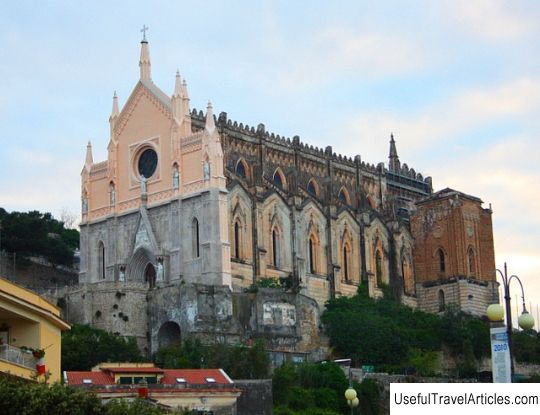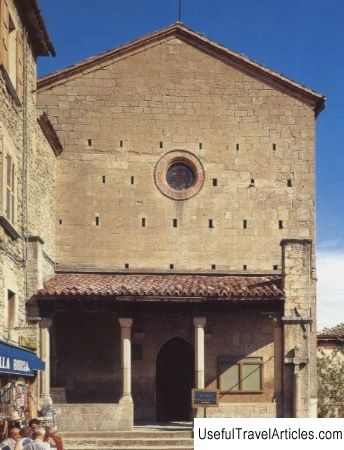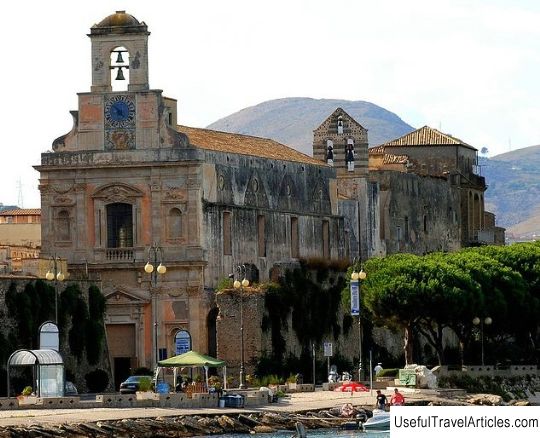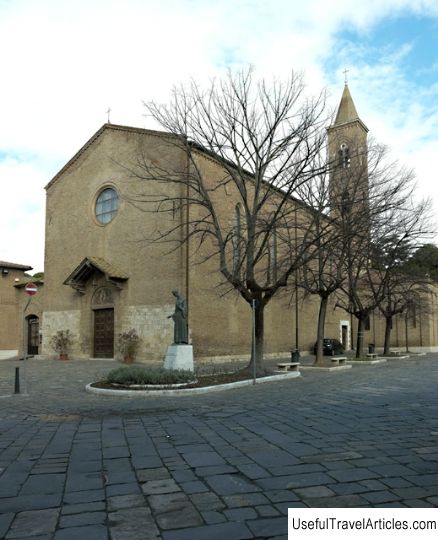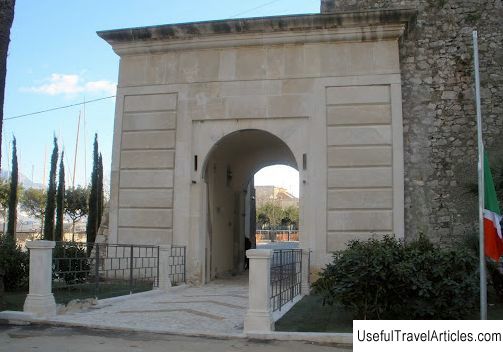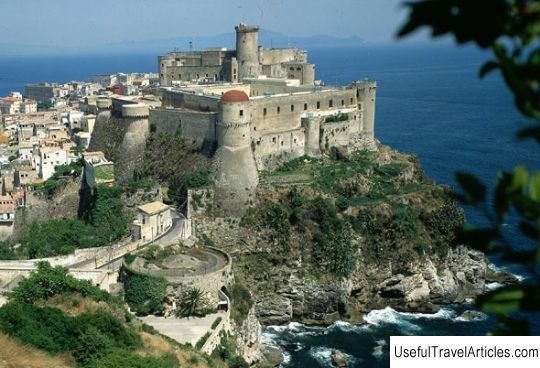Church of San Francesco (Chiesa di San Francesco) description and photos - Italy: Gaeta
Chiesa di San Francesco description and photos - Italy: Gaeta. Detailed information about the attraction. Description, photographs and a map showing the nearest significant objects. The title in English is Chiesa di San Francesco. Photo and descriptionThe Church of San Francesco in Gaeta was founded by the followers of St. Francis of Assisi in 1222. Its construction was supported by generous monetary donations by King Charles II of the Anjou dynasty, who was devoted to the behests of St. Francis. The huge Gothic church was completed in the 14th century. It consists of a central nave with high vaults, two lower side chapels, a square presbytery and an apse at the end. Like many of Gaeta's other churches, San Francesco was decorated with works of art between the 16th and 18th centuries. Members of some aristocratic families of the city and members of its Spanish government are buried inside. After Napoleon's invasion of the Apennine Peninsula, who issued a decree on the dissolution of all religious orders and the closure of churches and monasteries, the church of San Francesco began to decline. Even after the restoration work carried out from 1854 to 1858 under the direction of the architect Guarinelli, the temple was abandoned for some time. It is worth noting that the restoration of San Francesco was carried out under the patronage of the Italian royal family, and the same craftsmen who worked on the San Francesco di Paola temple in Naples took part in it. Small damage to the church building was done in the turbulent 1860s, when the process of unification of Italy took place, and during the Second World War, San Francesco suffered much more significantly. The following restoration work was carried out in 1951-52. You can get to the temple by the stairs, at the top of which, surrounded by a railing, a monument is erected and from which a grandiose view of Gaeta and the bay opens. In the center of the facade is a large portal with marble statues on the sides - Charles II of Naples and Ferdinand II. The tympanum shows an allegorical image of the restoration of the papacy, and from left to right there are statues of Saints Bernard, Ambrose, Francis, Augustine and Thomas Aquinas. Inside the church are huge plaster statues of the Apostles, and at the top of the apse - Christ the Redeemer. The decoration of San Francesco is the main altar, designed by Guarinelli, and several paintings depicting saints and biblical scenes. To the left of the church stands a building that was once a monastery. It contains a 14th-century cloister. The vast courtyard served as a recreation area, which even had a football field. a monument was erected and from which a grandiose view of Gaeta and the bay opens. In the center of the facade is a large portal with marble statues on the sides - Charles II of Naples and Ferdinand II. The tympanum shows an allegorical image of the restoration of the papacy, and from left to right there are statues of Saints Bernard, Ambrose, Francis, Augustine and Thomas Aquinas. Inside the church are huge plaster statues of the Apostles, and at the top of the apse - Christ the Redeemer. The decoration of San Francesco is the main altar, designed by Guarinelli, and several paintings depicting saints and biblical scenes.To the left of the church stands a building that was once a monastery. It contains a 14th-century cloister. The vast courtyard served as a recreation area, which even had a football field. a monument was erected and from which a grandiose view of Gaeta and the bay opens. In the center of the facade is a large portal with marble statues on the sides - Charles II of Naples and Ferdinand II. The tympanum shows an allegorical image of the restoration of the papacy, and from left to right there are statues of Saints Bernard, Ambrose, Francis, Augustine and Thomas Aquinas. Inside the church are huge plaster statues of the Apostles, and at the top of the apse - Christ the Redeemer. The decoration of San Francesco is the main altar, designed by Guarinelli, and several paintings depicting saints and biblical scenes.To the left of the church stands a building that was once a monastery. It contains a 14th-century cloister. The vast courtyard served as a recreation area, which even had a football field.               We also recommend reading Cathedral of Our Lady (Onze-Lieve-Vrouwekathedraal) description and photos - Belgium: Antwerp Topic: Church of San Francesco (Chiesa di San Francesco) description and photos - Italy: Gaeta. |
